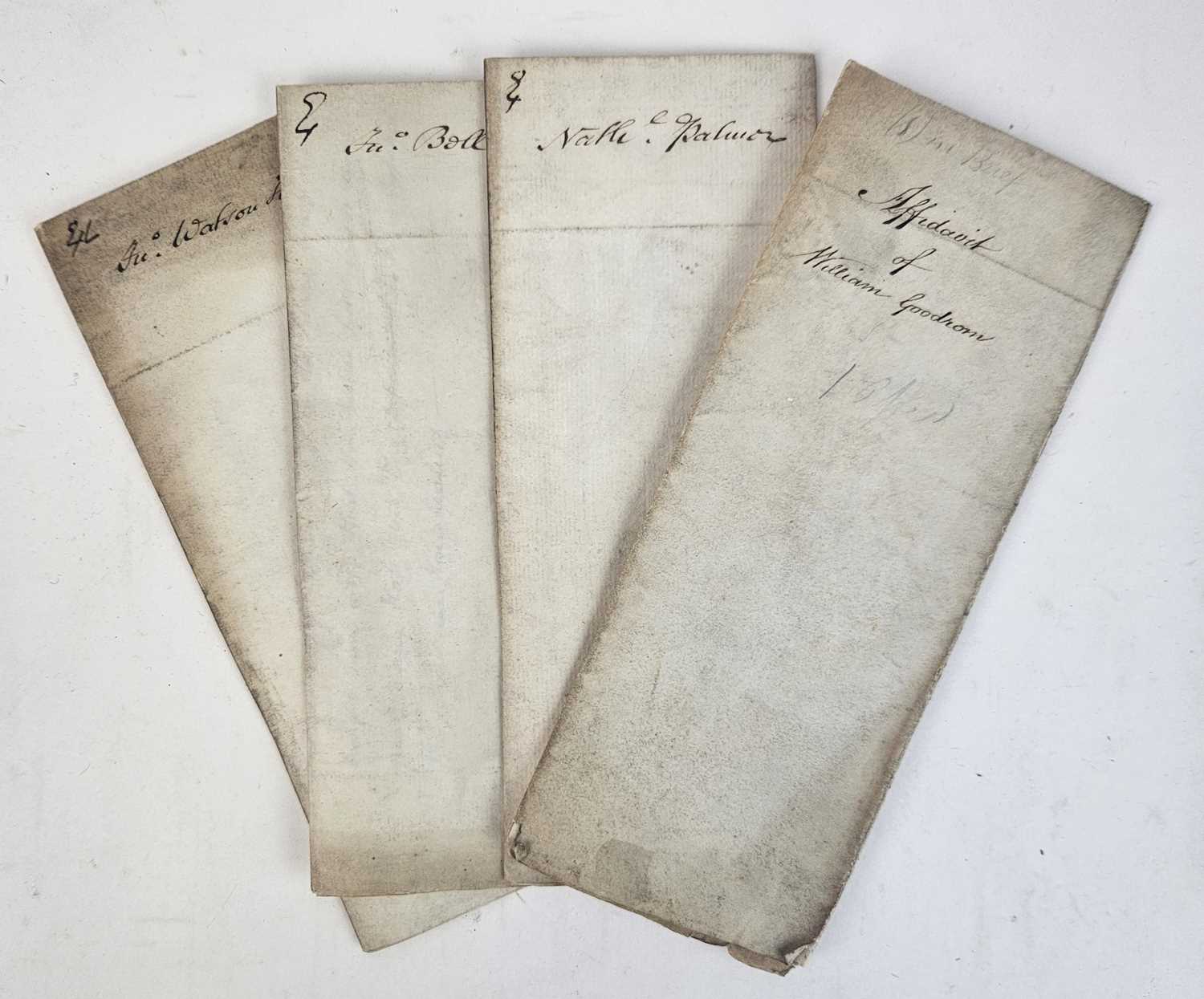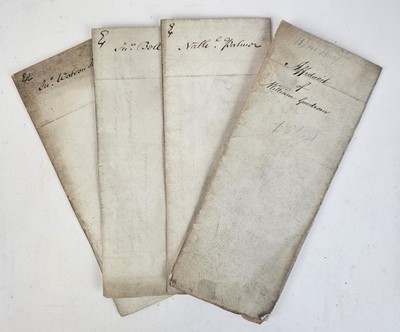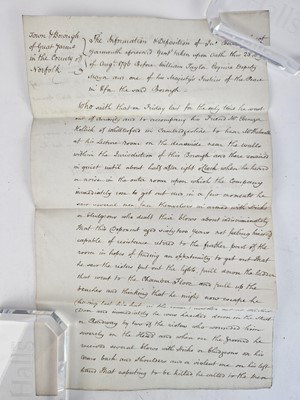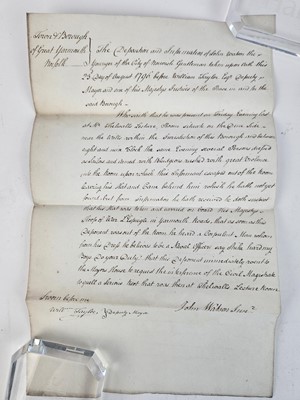Ending 8th Aug, 2023 16:00
Timed - Militaria, Naval and Maritime Auction
Manuscripts - Anti-radical theft and assault by Royal Navy sailors, 1796
Anti-radical theft and assault by British sailors stationed onboard the captured French war sloop L'Espeigle. Great Yarmouth, 1796. Four manuscript affidavits, giving evidence from three of the assault victims and one witness onboard HMS L'Espeigle, concerning allegations regarding an angry mob of sailors breaking into a lecture hall prepared for a talk by John Thelwall, the radical British orator, writer and political reformist.
Armed with bludgeons, the sailors indiscriminately attacked men, women, and even children present in the room. During the chaos, numerous victims had their belongings and clothing seized or stolen, which were later taken back to the ship. Such widespread attacks played a crucial role in Thelwall's decision to abandon politics in 1798.
The three witness statements provide insights into the harrowing events. John Watson the Younger, in his statement given on August 23, 1796, described how several individuals dressed as sailors stormed into the room with great violence. Fearing for his safety, Watson managed to escape the room but lost his hat and cane, suspecting they were taken and carried aboard the HMS L'Espeigle. Amid the chaos, Watson overheard a corpulent man, presumed to be a Naval Officer, urging the sailors to carry out their aggressive actions.
Another witness, John Bell, also provided his account on the same date. He recalled that around 8:30 PM, he heard a commotion in the outer room, prompting the attendees to rise and attempt to flee. Several men armed with sticks or bludgeons forcefully entered and struck at anyone in their path. Being sixty-two years old, Bell could not resist and sought refuge in a far corner of the room. The attackers extinguished the lights, pulled down the ladder, and obstructed the exits. Despite losing his hat in the previous room, Bell managed to leave through the East Door but was subsequently attacked by two assailants in the street, sustaining severe head and body injuries. In fear for his life, he pleaded with them to spare him, which eventually halted the assault.
Nathaniel Palmer, also giving his statement on August 23, 1796, witnessed a group of men forcibly entering the room. Despite his attempts to prevent them, their overwhelming numbers and violence made resistance impossible. As soon as they gained access, they began striking every person in the room, regardless of gender or age. Palmer's wife was in the centre of the room, so he bravely tried to reach her. In the process, he received a painful blow to the shin from a person wielding a stick or bludgeon. Palmer eventually managed to rescue his wife, but the experience was incredibly challenging.
The testimony that proved to be the sailors' downfall came from William Goodrom, a blind violinist who had been aboard the HMS L'Espeigle to perform for the crew on the night of the attack. Goodrom's affidavit explicitly named the individuals involved, notably the captain, and provided details of what he overheard during his 48 hours on board. According to Goodrom, the captain immediately ordered all hands on deck, instructing the men to take sticks and go ashore to apprehend the preacher. Although the captain told them not to destroy the building, he encouraged them to engage in noisy combat using single sticks. Later that night, the sailors returned to the ship, boasting about their violent triumph and the items they had seized, including shawls, a bonnet, a cane with an ivory handle, wigs, and multiple hats. Goodrom also heard discussions among the sailors expressing a desire to repeat the spree the following night. One sailor, Simon Redgrave, mentioned that people were inquiring about him and vowed to change his appearance and carry a weapon if he were to go ashore again, threatening violence against any bourgeois who dared to interrupt him.
Thelwall documented this incident in his 'Selected Political Writings 1797-1809,' denouncing the ringleader, Captain Roberts of L'Espiegle, who later dared to threaten a repeat of the outrage in Thelwall's presence. According to Thelwall, Captain Roberts made a formal speech to his crew and issued orders for the attack. He dispatched approximately thirty-five to forty men in the ship's boats, who were joined by others on the shore, totalling around ninety individuals. Captain Roberts provided directions for arming themselves with bludgeons and other weapons. The armed group, after consuming copious amounts of brandy, set off on their disgraceful expedition, indiscriminately attacking anyone in their path. One individual narrowly escaped death when an officer swung a cutlass at his throat, managing only to slice through the knots of a silk handkerchief tied around his neck.
Sold for £360






